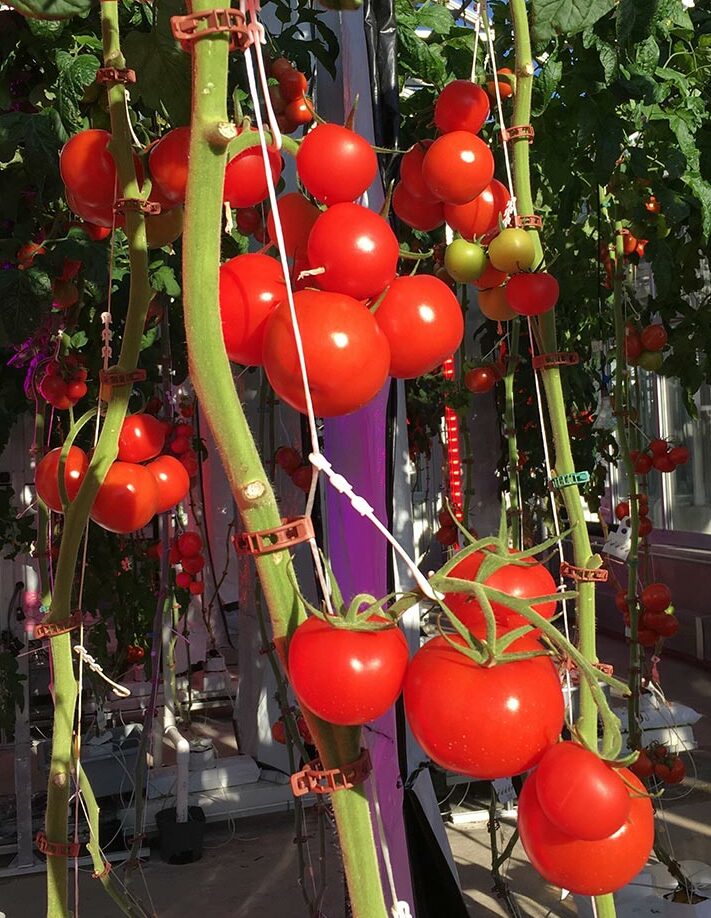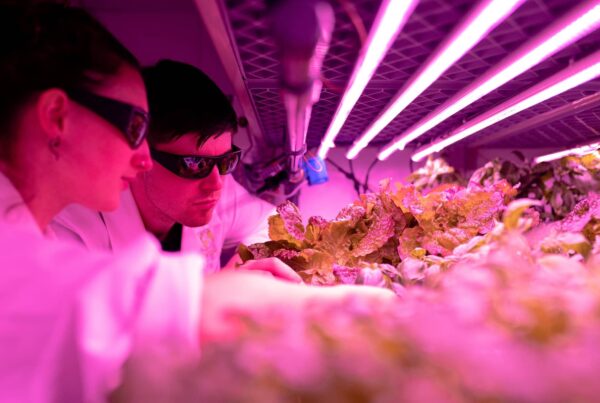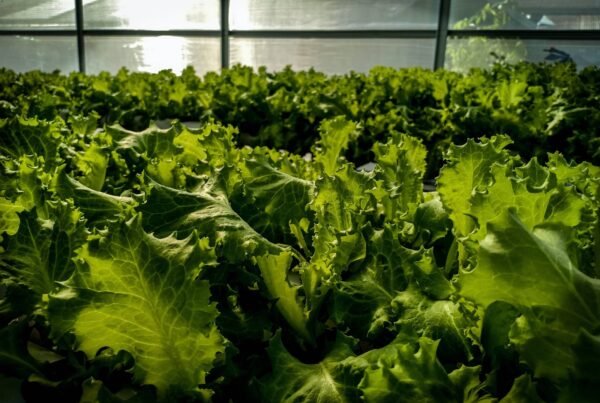CEA is often pitched as a tool to address food deserts and swamps, and data from the 2022 USDA AgCensus supports that story.
On August 7, RII presented some of the main food-related CEA trends found in the USDA Census of Agriculture. RII’s Carmen Azzaretti and USDA’s James Altland, a Research Leader in the Application Technology Research Unit (ATRU), dug into some of the findings in RII’s “CEA in the Census of Agriculture” report.
The USDA breaks out the food produced under protection (which encompasses both greenhouses and indoor farms) into four distinct categories: “mushrooms,” “greenhouse tomatoes,” “greenhouse fruits and berries,” and “other greenhouse vegetables and fresh-cut herbs.” The latter group encompasses everything from leafy greens and cucumbers to basil plants and peppers.
As noted during the webinar, the U.S. greenhouse food production market is expanding, with several key food groups and areas seeing outsized growth. Here, we present some of the main takeaways from that presentation.
Find out more about the U.S. food production and the broader CEA industry in RII’s exclusive “CEA in The Census of Agriculture” report at this link:
resourceinnovation.org/rii-featured-report/
Takeaway 1: Mushrooms are an outsized earner relative to the area they take up and the number of operations growing them.
Mushrooms are the highest-value food crop category reported in the USDA Census of Agriculture. Despite only making up 19% of the total food area grown under protection and 7% of operations growing food under protection, mushrooms represent 57% of the total sales of food grown under protection.
Altland put that into perspective by comparing it to America’s most popular crop: tomatoes. “The wholesale value–this doesn’t take into account the cost of production and all the other things … [is] about $300,000 per acre for tomatoes, [and] $1.7 million for mushrooms. That really shocked me. There’s a lot of value in mushroom production.”
New Jersey had the largest growth in mushroom sales of any market between 2012 and 2022, with a more than 1 million percent increase, “the largest growth that we had seen for any crop,” Azzaretti noted.
The growth can be attributed to two main factors, Altland noted. The demand for fresh mushrooms is booming, leading to local producers adding them to their production. “Mushrooms have a shelf life of approximately three days.”
But mushrooms also serve a secondary, and increasingly growing, market: cosmetics. “A lot of it is geared towards cosmetics, not food. So the growth of the mushroom market is for these companies, like the Johnson and Johnsons and the Procter and Gambles, needing natural ingredients for their products,” Altland said. These companies are often paying a premium beyond what consumers will pay at the farmers’ market or grocery store, helping fund this massive sales growth, Altland added.
Takeaway 2: Ohio is a booming food market.
Ohio, a Heartland state, ranked #4 in greenhouse food operations (a category that excludes mushroom production), and #2 in total greenhouse area producing food, behind only California. This represents more than 100% growth in the number of greenhouse food operations in Ohio and more than 400% growth in area cultivated.
This growth is partly fueled by nearby producers in Leamington, Ontario entering the U.S. market. “These [Leamington] have been expanding into the U.S. market,” Altland, who is based in Ohio, explained. “Management from Leamington can get to Ohio within a day, [enabling them to] run their operation right from Leamington.”
Setting up shop in Ohio “also allows them to utilize the ‘local’ label a little more effectively,” Altland continued. Ohio is “within 600 miles of 60% of the U.S. population, and the USDA says anything grown within 400 miles is local.”
The climate, both weather-related and political, also makes Ohio a strong market in which to grow a CEA business. “We have a lot of fresh water, and Ohio’s been incredibly competitive in reducing tax rates on infrastructure,” Altland shared. “They have a really competitive infrastructure system in terms of highways and mobile transportation.”

Takeaway 3: North Carolina is quietly becoming a fruits & berries super-producer.
Beyond mushrooms being a boon to state markets, fruit and berry production has expanded considerably in several markets, most notably in North Carolina. In 2012, only eight greenhouse operations totaling a mere 6,054 sq. ft. of production produced fruits and berries. By 2022, those figures ballooned to 75 operations totaling 994,760 sq. ft. of production grew strawberries, blueberries, citrus fruits, and/or melons.
The growth figures in the Tar Heel state are staggering: an 837.5% increase in the number of operations, and a whopping 16,331.5% increase in total area.
Surprisingly, this market boom is happening fairly inconspicuously. “I talked to the people from North Carolina, and they had no idea,” Altland shared. “Not a lot of these farmers are always making a lot of noise and letting North Carolina State University know that they’re there.”
There have been several initiatives and incentive programs in the state’s recent history that could help explain this fruit and berry production growth. Community-driven programs promoting local production and purchase have greatly helped support greenhouses producing specialty crops and fruits & berries. For example, the NC 10% Campaign “was founded in 2010 with the aim of boosting local food spending.” Efforts to help promote buying produce locally likely are helping grow the popularity of farmer’s markets in North Carolina, where many local producers, especially smaller operators, can sell their products.
In 2022, the North Carolina Farmers Market Network (NCFMN) and NC State Extension conducted its first-ever farmers’ market survey, which found that there are 194 active farmers’ markets in North Carolina in 93 of its 100 counties. The report found that most markets are growing in size “with 80% of markets reporting that their vendor numbers increased between 2021 and 2022. Markets indicated having between 3 to 125 vendors on average per week, with 32 vendors being the average weekly number found at markets across the state.”

Additionally, “farmers’ markets in North Carolina generated on average $2,792,840.11 in vendor sales [… and] that 6,183,441 people visited farmers’ markets in North Carolina in 2022.”
Federal programs also funded projects dedicated to helping greenhouse producers, especially economically disadvantaged groups. One such program is the USDA’s 2501 program which provides assistance to underserved and veteran farmers, ranchers, and foresters. In the 2010-2012 funding schedule, USDA supported a project led by the North Carolina Agricultural and Technical State University to enhance the income of socially disadvantaged farmers by introducing year-round specialty crop production using renewable energy sources.
The project helped farmers convert old tobacco greenhouses into structures able to produce “year-round fruits and vegetables with reduced production costs by maximizing the use of renewable energy resources… This project [allowed] them to retain their loyal customer base, take advantage of higher prices during winter, thereby increasing their annual incomes and protect the environment.”
In closing, Altland noted how the CEA industry “has a lot of room to grow,” with the pun likely intended. “There’s a lot of different markets that are available to our growers, [and] I think the only constant is that there’s going to be change moving forward. So just hold on tight.”







